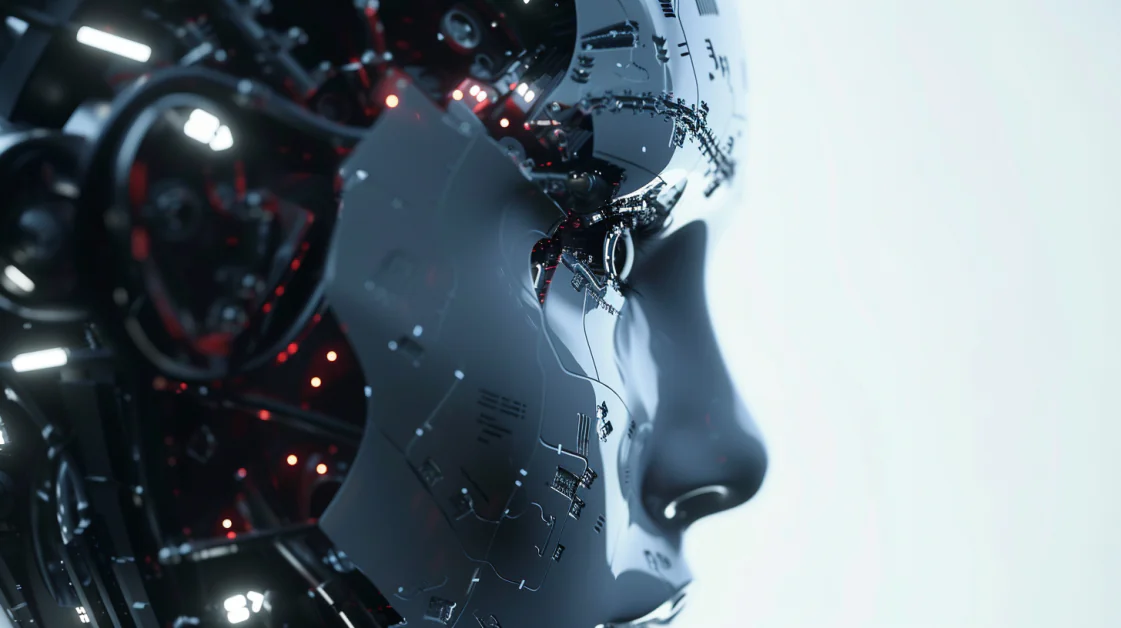Biohybrid Robotics: Living Skin Successfully Bonded to Humanoid Robots
In a groundbreaking development, researchers have successfully bound engineered skin tissue to the complex forms of humanoid robots. This achievement is a significant leap forward in the field of biohybrid robotics, blending biology with mechanical engineering to create more lifelike and functional robotic systems. The breakthrough, led by Professor Shoji Takeuchi of the University of […] The post Biohybrid Robotics: Living Skin Successfully Bonded to Humanoid Robots appeared first on Unite.AI.


In a groundbreaking development, researchers have successfully bound engineered skin tissue to the complex forms of humanoid robots. This achievement is a significant leap forward in the field of biohybrid robotics, blending biology with mechanical engineering to create more lifelike and functional robotic systems.
The breakthrough, led by Professor Shoji Takeuchi of the University of Tokyo, addresses a longstanding challenge in robotics: creating a seamless interface between artificial structures and biological tissues. This innovation not only enhances the aesthetic appeal of humanoid robots but also opens up new possibilities for their functionality and interaction with the environment.
The Innovation: Binding Living Skin to Robots
The key to this advancement lies in the team's novel approach to skin adhesion, drawing inspiration from human anatomy. By mimicking the structure of skin ligaments, the researchers developed a method that allows engineered skin to bond effectively with robotic surfaces.
Central to this technique is the use of specially designed perforations in the robot's surface. These V-shaped indentations provide anchor points for the skin tissue, allowing it to take hold and conform to the robot's complex contours. This approach is a significant improvement over previous methods, which relied on hooks or anchors that limited application and risked damaging the skin during movement.
Overcoming the challenges of working with living tissue was no small feat. The team had to maintain strict sterility to prevent bacterial contamination, which could lead to tissue death. Additionally, they faced the difficulty of manipulating soft, wet biological materials during the development process.
To address these issues, the researchers employed a clever combination of techniques. They used a special collagen gel for adhesion, which, despite its viscosity, was successfully coaxed into the minute perforations using plasma treatment – a method commonly used in plastic adhesion. This process ensured a strong bond between the skin and the robotic surface while preserving the integrity of the living tissue.

Takeuchi et al.
Why Living Skin on Robots?
The application of living skin to robots brings several significant advantages, pushing the boundaries of what's possible in humanoid robotics:
- Enhanced Mobility and Flexibility: The natural flexibility of the skin, combined with the strong adhesion method, allows the covering to move seamlessly with the robot's mechanical components. This integration enhances the overall mobility of the robot, enabling more fluid and natural movements.
- Self-Healing Capabilities: Unlike synthetic materials, living skin has the ability to repair minor damage autonomously. This self-healing property could significantly increase the durability and longevity of robotic systems, reducing the need for frequent maintenance or replacement of the outer layer.
- Potential for Embedded Sensing: Living skin opens up possibilities for integrating biological sensors directly into the robot's exterior. This could lead to more sophisticated environmental awareness and improved interactive capabilities, allowing robots to respond more naturally to their surroundings.
- More Lifelike Appearance: By replicating the surface material and structure of human skin, this technology brings robots one step closer to achieving a truly human-like appearance. This enhanced realism could be particularly valuable in applications where human-robot interaction is crucial, potentially increasing acceptance and comfort in social settings.
These advancements represent a significant stride towards creating robots that not only look more human-like but also possess some of the remarkable properties of living organisms. As research in this field progresses, we can anticipate even more exciting developments that blur the line between artificial and biological systems.
Applications and Future Prospects
The integration of living skin with robotics opens up a wide array of applications across various industries:
- Cosmetics Industry Applications: This technology could revolutionize product testing in the cosmetics industry. With lifelike skin on robotic platforms, companies could more accurately assess the effects of their products without relying on human volunteers. This approach would not only be more ethical but could also provide more consistent and controllable testing conditions.
- Training for Plastic Surgeons: The development of robots with realistic skin could serve as invaluable training tools for plastic surgeons. These advanced models would allow surgeons to practice complex procedures in a controlled environment, improving their skills without risk to human patients. The ability to replicate various skin conditions and types could provide a diverse range of training scenarios.
- Potential for Advanced “Organ-on-a-Chip” Research: The concept of a “face-on-a-chip” extends the current organ-on-a-chip technology. This could be a game-changer for research into skin aging, cosmetic effects, and surgical procedures. By providing a more comprehensive and realistic model of human skin, researchers could gain deeper insights into dermatological processes and test interventions more effectively.
- Improved Environmental Awareness for Robots: With the potential to embed sensors within the living skin, robots could achieve a new level of environmental awareness. This enhanced sensing capability could lead to more nuanced and appropriate responses to their surroundings, making robots safer and more effective in various settings, from healthcare to industrial applications.
Challenges and Next Steps
While the integration of living skin with robotics marks a significant milestone, several challenges remain on the path to creating truly lifelike humanoid robots. Achieving more realistic skin features stands as a primary hurdle. Researchers aim to incorporate complex elements like natural wrinkles, visible pores, and varying skin tones. The addition of functional components such as sweat glands, sebaceous glands, and blood vessels would further enhance both appearance and physiological responses.
Integrating sophisticated actuators for realistic expressions presents another significant challenge. Developing advanced “muscles” capable of producing subtle, nuanced facial movements requires a deep understanding of the intricate interplay between facial structure and skin. This goes beyond mechanical considerations, delving into the realms of biomimicry and fine motor control.
The long-term goals in biohybrid robotics are ambitious, focusing on creating robots with self-healing capabilities, human-like environmental awareness, and dexterous task performance. Achieving these objectives demands ongoing interdisciplinary collaboration, combining advances in materials science, robotics, and biology. As the technology progresses, researchers must also address the ethical considerations surrounding the development of increasingly lifelike robots and their integration into society.
A Pivotal Moment in Robotics
The successful binding of engineered skin tissue to humanoid robots marks a pivotal moment in the field of robotics. This breakthrough not only enhances the aesthetic realism of robots but also introduces functional benefits that could revolutionize various industries.
The potential impact of this technology spans multiple fields, from advancing medical training and research to transforming product testing in the cosmetics industry. It also pushes the boundaries of what's possible in human-robot interaction, potentially leading to more accepted and integrated robotic systems in social and professional settings.
Looking to the future, the continued development of humanoid robotics with lifelike skin opens up exciting possibilities. As researchers overcome current challenges and refine their techniques, we may see robots that are increasingly indistinguishable from humans in appearance and capability. This could lead to profound changes in how we interact with and utilize robotic technology in our daily lives.
The post Biohybrid Robotics: Living Skin Successfully Bonded to Humanoid Robots appeared first on Unite.AI.












